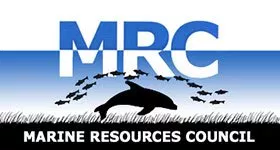Environmental Impacts
Sea Level Rise
Diverse effects from sea level rise will affect human communities as well as the Indian River Lagoon and the coastal ocean.
Sea Levels are Rising
Rapidly increasing ocean and atmospheric heat content are increasing the melt of land and sea ice, and the thermal expansion of water molecules (e.g., USGCRP, 2018; IPCC, 2019). Coupled with other geophysical processes, increasingly higher sea levels are in east Florida’s future and are already generating increasing numbers of high tide or “sunny-day” flooding events in south Florida (Wdowinski et al., 2016), the image is from a 2015 high tide event in Coconut Grove. The same trends are seen up the U. S. Atlantic coast including the Chesapeake Bay, New Jersey, and New York (NOAA, 2020). Flood mapping tools for Florida communities are web-available and include resources at Flood Factor, NOAA’s Digital Coasts, and Climate Central.
Sea level rise affects communities on the Indian River Lagoon and coastal ocean in many ways (e.g., Parkinson et al. 2021c). Transportation planning is important, often involving causeways or low-elevation roads in addition to those residences and businesses on or close to the water. Thoughtful long -term land use planning for communities is essential. The East Central Florida Regional Planning Council (2018, Appendix D) now recommends that a projected rise of 5 to 8.5 feet by 2100 be used for local and regional local government planning, based on NOAA and US Army Corps of Engineers reviews. This is a substantial increase compared to the 1 to 3 foot estimates commonly used for decades; those older estimates were not alarmist but relatively conservative (e.g., SFRCCC, 2019; IPCC, 2019).
Source: Florida Sea Grant
Source: NOAA
How Can This Affect Us?
Rising sea levels have many implications for coastal plants, animals, and human health and commerce. Based on many major reviews and other sources (Carter et al. 2018; USGCRP, 2018; Mach et al. 2019; Flood Factor; Kulp and Strauss, 2019; Parkinson et al. 2021a), a small sample of effects on humans and associated coastal species includes the following:
- Future development patterns that continue to emphasize building on shorelines and in floodplains will be challenged by highly increased socio-economic costs of flood losses, and responses by insurers and other business sectors.
- Impacts on the biodiversity of the IRL from climate change can be mitigated by adaptation actions which address pollutant loadings in the context of increased precipitation, increasing storms, and sea level rise.
- Aging, over-burdened stormwater and wastewater systems (septic and sewer) will become increasingly impacted, threatening the health of coastal waters and human populations.
- Low-impact development practices and coastal land acquisition continue to be essential components of coastal climate adaptation in east Florida.
- Human drinking water comes from groundwaters, increasing levels of saltwater intrusion will penetrate further horizontally and vertically, increasing salinity of more inland surface waters and groundwaters.
- Complex changes in salinity in tributaries feeding the IRL may increase stressor-loads on animals and plants that use lower-salinity habitats
- Terrestrial plants that live above the waterline can be lost with decreasing sediment stabilization of shorelines and prolonged saltwater exposure.
- Various other potential consequences exist, many are examined in the above and associated technical literatures.
See Also:
Hotter temperatures
ocean & EstuariNe acidification
extreme weather
SURPRISES ARE GUARANTEED
Our Sponsors

